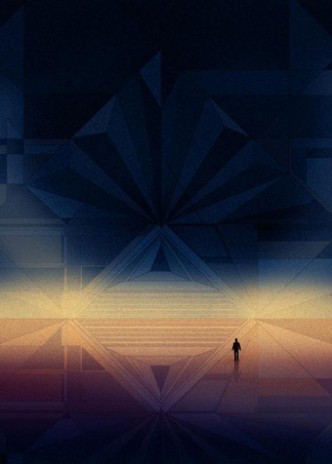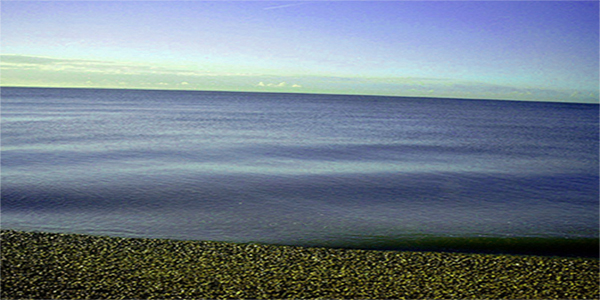
Dreams are a reality that all of us experience. Regardless of the setting, the people, or how crazy the situation, we all have our own stories to tell from the dreams we’ve had over the years. This segment is meant to expand your consciousness, to open your mind and let your own dreams flood this world and change our own reality. For these are worlds that I have visited in my own mind and sleep, that I share with you. I am the Wanderer of Dreams.
The Watcher in the Reef
Ever since I was a little girl, the ocean has been an important aspect of my life. The salty smell of sea air, the funny way sand felt between my toes, and the soothing, peaceful sound of the waves as they crashed ashore were all poetry in motion for me. Now don’t just assume that I’m some stereotypical, slacker surfer girl that jumps every wave she sees. No; my place is and has always been beneath the waves.
I remember I was six when my uncle took me snorkeling for the first time. I still revel in those first, exploratory moments: the magnificent colors of all the fish and how graceful they danced across the reef, the sheer awe that there was so much beneath the surface that not many people got to see. It was unspoiled by people, one of the purest forms of natural beauty. When I was ten, my mother bought me my first aquarium. Of course I made it into a salt water aquarium. I reeled at the fact that I could know take a piece of my underwater sanctuary home with me. First came the hermit crabs: easy enough to collect, plucked from the tide pools by delicate hands like plentiful ripe fruit. As I got older, my collection skills sharpened exponentially. I began to catch yellow tangs, six-lined and Christmas wrasses, and even managed the occasional raccoon butterfly fish. By the time I was twelve, I was an expert aquarist, as skilled with a catch net as an artist with his brush. I had five aquariums, each of them at least fifty five gallons strong. Every single fish and invertebrate in my collection I had caught with my own hands; I had no need to visit a pet store. My friends would tease that I had more specimens in my collection than the zoo and the local aquarium combined. I would just smile. I’m glad they admired my miniature family.
As anyone knows, nature takes it toll on human flesh, regardless of the environment. Mine’s was no different. Being in the sun for that long, I regularly got either horrible sunburns or magnificent tans. My mother used to tease me that I looked nothing like my Japanese ancestry, more akin in skin tone to a sea lion than a person. I laughed it off, but oh how much better it would’ve been to be a seal. More careless, and carefree. Even more obvious were the scars I received on my arms and legs from snorkeling so close to the reef. It was inevitable: if you swim near rocks, you’re gonna get cut up. People used to tell me how awful they must have been, but I found them much more positive. For me, the cuts and scrapes were marks of pride, as if the reef had felt comfortable enough to reach out and caress my skin. They were much more than scars, they were badges of honor.
I remember the day I first came out here, however long ago it was. The morning started just like any other. I got up early, as the sun was rising. Beautiful, clear sky. Cloudless. Perfect. First I did was check the tide charts on my calendar. I saw was that it was a full moon that night. The waves were going to be a bit rough. The curve in the chart pointed that it was best to go in just after noon. I gathered all my buckets, filled to the brim with everything I needed to enter my realm beneath the waves. Snorkels and masks, heavy nylon gloves (for turning over rocks), rubber-soled reef walkers, a myriad of nets, even special wax ear plugs to keep the water out of my ears. With one fell sweep, I tossed all of it in the back of my rusty old pickup truck and drove off.
After twenty minutes or so of driving, I reached what I used to call the “Jungle Path”. The only way to get to my favorite diving spot. It was overgrown on all sides with spreading vines and groping tree branches. Anyone that wasn’t used to that path would’ve probably gotten the shit scared out of them. I used to welcome the sight of those plants, challenging them to do their best to keep me away from my second home. Managing to grab a hold of all those buckets at once, I made my way through the foliage and towards freedom.
That day, the journey seemed so much longer than normal, the greenery much thicker and more difficult to traverse. It was strange. I know now why that was so, but first I must continue my tale for you. While I still can. After an eternity of searching and pressing onward, I had finally made it to the clearing. Sunlight burst forth as I parted that last annoying tree, nearly causing me to drop my buckets as I tried to shield my eyes. Then I saw it, exactly what I had longed for. There, in front of me, was the clear blue body of water that I craved to enter. Surprisingly enough, despite my earlier prediction and research, there were no waves. No surf. No rough waters. Just the calm glassy surface that I was eager to dive beneath. After setting my buckets down on a comfortable spot in the sand, I pulled the gloves over my scarred, delicate hands and strapped the floating catch bucket to my wrist. Tightening the mask over my face and putting the snorkel into my mouth, I nearly sprinted to the paradise before me.
The water was so wonderfully warm as I nose dived into it. It was so clear, I swore I was not beneath the waves, but above them in the sunny noon air. The only thing that convinced me I was underwater were the fishes. There was an array the likes of which I had never seen before in one single location. It was as though I were watching a rainbow swim before me, flashing, darting, all in unison. There were orange shouldered tangs, the stark royal blues of imperial angel fish, fire red tomato clownfish, the chocolate and white spotted Harlequin Sweetlips and others I had never even seen before. All of these fish shouldn’t have even been in the same environment! But I didn’t realize that at first, the beauty was too captivating for my then simple mind to comprehend the absurdity. It was as though they were hypnotizing me, drawing me further into the depths before me.
I remember emerging from the water, catch bucket in hand, finally realizing that I had not caught a single thing in my awestruck stupor. Then, it hit me hard, with the horrifying speed of a runaway swordfish on cocaine. A stench like I had never experienced before, and doubt I will again in my current state. Something was rotting, and had been for awhile. Clenching my nose shut, I shielded my eyes from the sun with my other hand and searched the rocky protrusions above the water to see if I could discover the source of my nausea. There, I saw something. On one of the rocks a few yards away, just on the edge of the beach. A lump of something, flesh maybe? I remember walking closer, the stench getting stronger with each step. The horror is still with me today. As I made my way closer, I realized, to my relief, that it was not the corpse of a human being. That would’ve probably driven me to the point of insanity, oh the irony! No it wasn’t a human body. From what I could make out, it looked like it used to be rather large tiger shark. Probably about eight feet from nose to tail fin. Well, whatever was left of it. It had to have to been there for at least a month, probably longer, much longer. The flesh that was left was already falling down in horrid strings, like a macabre curtain covering pallid insides. Wait. I remember now. Something else was off about that shark. Oh, how could I have forgotten? Yes it was rotten and had probably been attacked by scavengers and like, but one thing stood out above all else. Its body cavity. The skin looked like it had been ripped completely clean from the belly, and all of its internal organs had been removed, and presumably devoured. Yes this could have been easily done by stray dogs or sea birds, but I had never seen it done so cleanly. Strange. How did I forget that?
Something nearby caught my attention almost immediately after I had found the shark. Another rock formation near by, but this one didn’t seem quite right. It looked different. I still can’t describe it, but none of the other rocks in the area were like this one. And when I turned back to examine the remains again, I felt an unnerving twinge on the back of my neck. Like I was being watched. Intently. By a presence greater than any other I’d felt in my life before that. And I remember now, when I turned around to see what it was, nothing. There was nothing behind me. The strange stone was gone. I abandoned my curiosity for the corpse, grabbed my things and ran as fast I could back towards the path.
It felt as though I had been running for hours. The jungle never seemed to end, trees reaching out to mock me, pointing in all directions as if trying to throw me off the course. And then I finally saw it: an opening, sunlight reaching through and penetrating into the eternal darkness around me. I ran even faster, hope filling my heart that my escape was nearly at its end. When I broke through into that clearing, what I saw nearly drove me to madness. I was back. At the same beach I had tried to escape from. I remember my mind whirling in confusion. Had I turned around by accident? Did the thick foliage confuse my direction? Did I really go in a circle? I saw the sun slowly setting in the distance. Then all I saw was darkness.
The beach was still in front of me, in a strange midnight glow caused by the full moon in the black sky above. I slowly lifted myself from where I had fallen in my confusion. Despite it be being so late, I remember being able to see almost everything around me, and it was what I saw next that may have caused my insanity. There in the shallow water, not but ten feet in front of me, was the odd stone again, centered directly in my field of vision. But this time, it was different. It was moving. Slowly, it rose from the shimmering blue water, a shapeless mass against the calm sea. It was frighteningly humanoid, with the exception of an enormous bulbous head that pulsed slowly in the darkness around it. Two glowing white spheres appeared, probably its eyes. I then felt the strangest sensation. My thoughts weren’t my own anymore. I knew why this being was here: it was protecting the reef it called its home. And it was calling to me, beckoning for me to join its unending quest. That’s where my mind turned, I think. But I can’t be sure.
I awoke suddenly, nearly being blinded by the mid-day sun. Apparently, I had blacked out and fallen into the sand. Maybe it had all been a nightmare, a strange concoction of the mind and my surroundings. Oh how I sometimes wish now that had been true. I shook off what I thought to be merely a dream, geared myself once again, and dove into the water. The same array of magnificent fish surrounded me once more and I felt at peace with all of them. I saw, in the open water, a blue ribbon moray eel, a very rare find, to say the least. Let alone swimming freely in water. I swam after it and managed to corner the little guy in an odd rock formation. When I looked up to follow his movements, the reef had a surreal nature about it. I abandoned my quest for the eel and turned my focus to the rock he had just swam past. The shape, the texture, everything about the protrusion I was touching told me the same thing. I was looking at a human skull. But I knew that couldn’t be, it was attached to the reef, just another part growing out of the now dead coral, itself even covered in algae and other reef life. I even tried to pry it free, thinking maybe it was just stuck in. No, it couldn’t be. It was just another piece of rock that dotted the reef. I swam off, confused and a little creeped out. A shiver raced up my spine, and a familiar thought entered my head. Was I being watched again?
I emerged from the water empty handed again, freeing my catch bucket from its payload of nothing but sea water. I removed my mask and snorkel and put them back into one of the larger buckets. Looking over to the horizon, I finally realized just how long I had been out; the sun was already beginning to set. I turned back to the reef, and there, directly in front of me yet again, was that same strange stone from before. Fear gripped me and I froze in place, trembling, knowing all too well what was coming next. It rose slowly out of the water, just like in my dream. But this time was different; I could see all of it. The creature was tall, seven or eight feet out of the water with still more beneath the serene surface. Its skin was patched with enormous, grotesque barnacles, breaching in and out of their bone colored shells. What I thought to be a humanoid form in my dream was actually four pillar-like tentacles that held it so high in the air. The being’s bulbous head throbbed like a heart torn from a recently dead cadaver, its slick skin reflecting the red-orange twilight sun. Those eyes. I remember first seeing those pasty white eyes. No pupil. No expression. Just milky globes beckoning me closer. Against my will, I began to slowly walk forward, towards this grotesque source of my dread. The cool ocean water quickly covered my feet as I made my way closer and closer. Screaming in terror deep inside my mind, I met the creature, face to face, eye to eye, and went on to embrace its slimy form. I remember now, becoming one with the protector of my true home.
Now here I am. A part of what I always was. I am the reef, and the reef is me. My bones have long since abandoned me, becoming drawn to become a part of the rocks that dot the area of my watery abode. My eyes have long since lost their emotion, glistening now like pearls of the sea. My arms and legs now dangle around me like a twisted curtain of malformed flesh. I am perfection. I now guard from whence I once stole for my own. All the creatures of this reef, this sanctuary, now turn to me for protection.
Why am I telling you this, you ask? Because I’ve seen you. I remember when I was like you. When I left the land to explore the sea. This is a warning. Take only what you need. Leave the precious things as they be. For you are under the gaze of the soulless eyes of the watcher in the reef. All life has come from the ocean, and someday there it shall return. Some, sooner rather than later. Perhaps one day, you will find your place. Just as I have finally found mine.
By Mike Limatoc
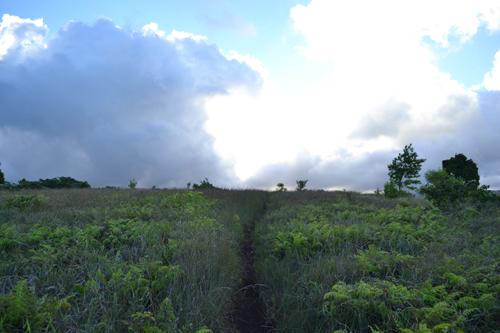

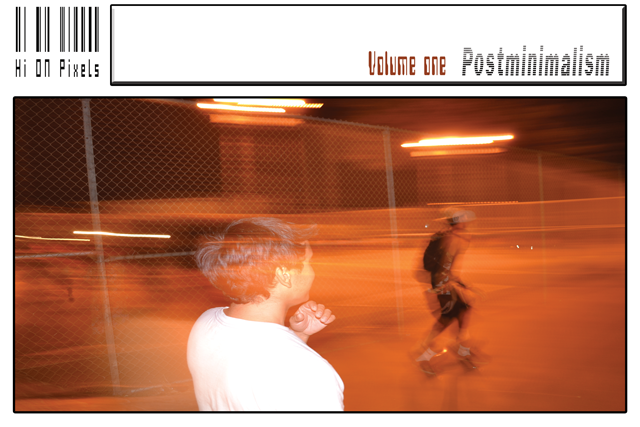


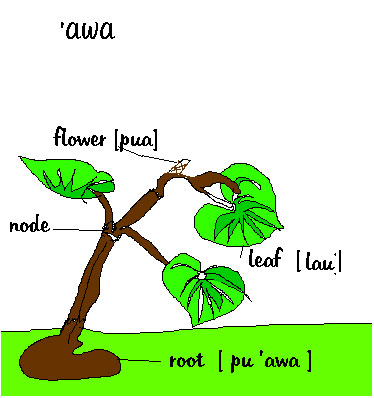
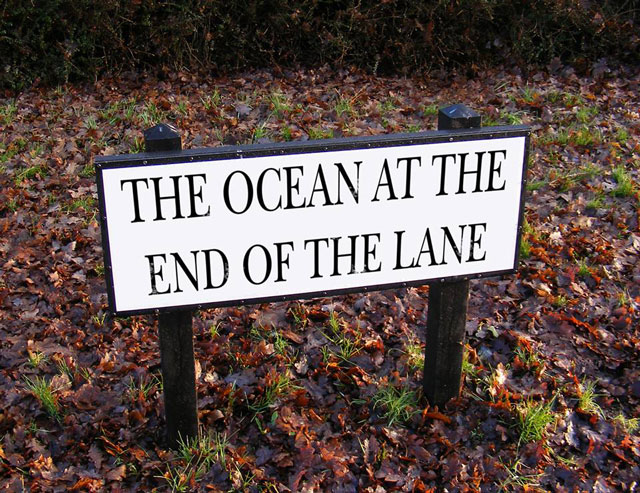
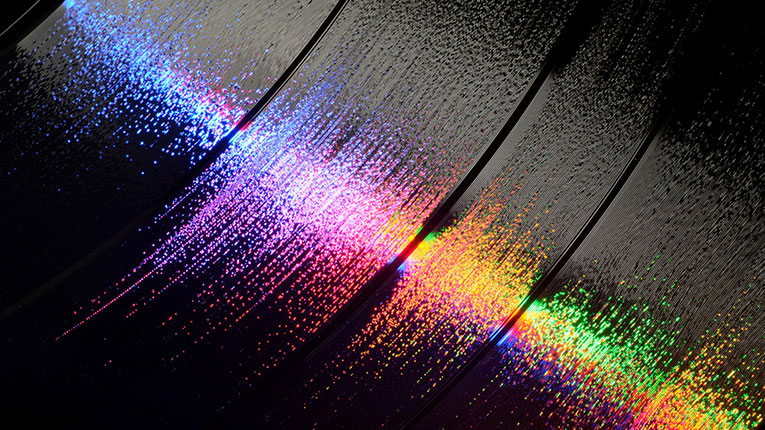
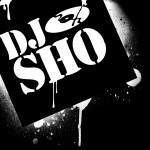
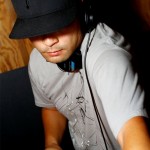
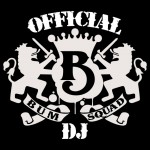
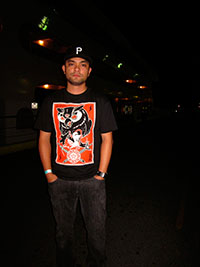
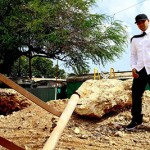
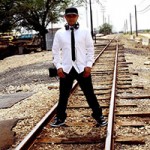

 When one thinks of book stores in Hawaii, common images would be Hawaiiana, hiking maps, best eats, or tourist attractions. What about books on revolutionary commentary? Probably not. I am proud to say that we have such an establishment in our Aina. Today I interview one of the patrons of Revolution books who has been frequenting the store since the eighties .
When one thinks of book stores in Hawaii, common images would be Hawaiiana, hiking maps, best eats, or tourist attractions. What about books on revolutionary commentary? Probably not. I am proud to say that we have such an establishment in our Aina. Today I interview one of the patrons of Revolution books who has been frequenting the store since the eighties .